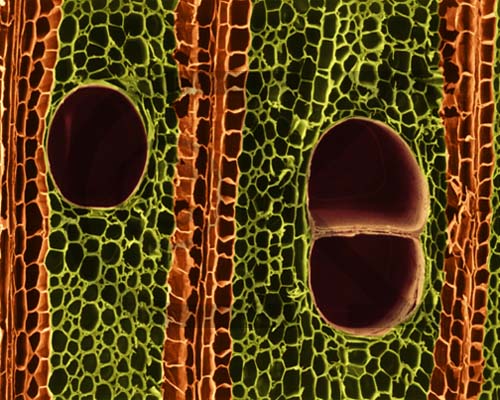What is Microscopy?

Light Microscopy (LM)
Light microscopy is a way of looking at objects through a powerful microscope. Light is transmitted through or reflected from a sample in order to see how it is made up. Magnification ranges from 5 to 1500 times. This is what we usually think of when we think of looking through a microscope.
However the images in this site use TEM, which is far more powerful and allows a greater degree of magnification. It is explained below.
Transmission Electron Microscopy (TEM)
In an electron microscope electrons are used instead of light to "see" a specimen. Electrons are transmitted through a sample much like light in an optical microscope. However, instead of glass lenses focusing the light wavelengths, electromagnetic lenses are used to focus the electrons on the sample.
The sample must be specially prepared by slicing it to a thickness which allows the electrons to transmit through the sample. Because the wavelength of the electrons is much smaller than the wavelength of light the amount of magnification you can get with TEM images is many times greater than with an ordinary light microscope.
This means that the TEM can show the finest details of internal structure - in some cases as small as individual atoms. Magnifications of 500 to 500,000 times are easily obtained.

For example, this is what a piece of balsa wood looks like under an electron microscope.